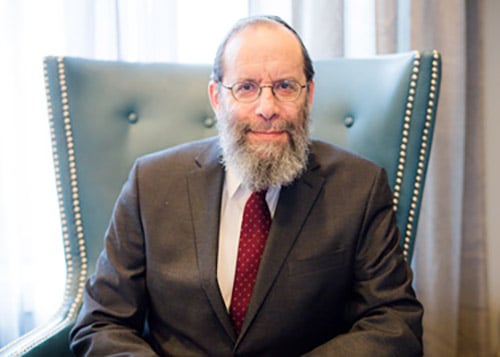As I walk through the streets of my neighborhood, I hear the sounds of stirring music and soulful singing coming from the windows of shuls and private homes. Thousands of Jews descend upon the Kotel and join together to say Selichos.
During Elul and Aseres Yemei Teshuva, the Ten Days of Repentance, one can participate in a variety of gatherings scheduled to help people get in the mood of the Yamim Noraim.
Maybe I don’t remember correctly, but I don’t recall the prevalence of such gatherings during my youth. It seems to me that while the tefillos remain the same, much has changed over the years, at least for me. These positive and inspiring developments address the needs of our generation.
When I was a little girl, my family would spend our summers and Yamim Noraim in upstate New York, where my father, z”l, was the rabbi of a shul. The shul provided us with a cozy house and a beautiful backyard. I loved spending those carefree afternoons swinging a bat at a ball hurled in my direction via a pitchback and hanging upside down on the swing set with my brother. I can still smell the musty odor of the cellar hidden under our home. Pulling open the cellar door was an adventure in itself. The two-hour-plus journey from our home in the city to the country seemed like forever to me, but I was thrilled to be there once we arrived.
You could hear a pin drop when my father captivated the kehilla, congregation, with his drasha, speech, every Shabbos. But the awe-inspiring atmosphere during the Yamim Noraim was on another level. As always, my brother would sit on the bima next to my father, and I would sit like a princess next to my mother, proudly watching my father lead his flock.
I shuddered when the baal tokea, one who blows the shofar, would lift his long and twisted shofar to his lips and fill the shul with his piercing blasts. I would follow the tassel that flipped from side to side on top of the chazan’s cap as he swayed back and forth, pouring out his heart in tefilla. I would watch with fascination as he would bend his knees and lower himself to the floor during Aleinu and the avoda (the work of the Kohen in the Beit Hamikdash), all while keeping his feet together. And most importantly to me back then, I would get a good look at the unusual selection of shoes that the men wore to shul on Yom Kippur.
During davening, I would play in the lobby with the dumb waiter (remember those?), but I would come running back inside whenever the chazzan would sing my favorite tunes. Since they were all my favorite tunes, I spent quite a bit of time in shul.
By far, my all-time favorite was Ki Anu Amecha. I could not believe my good fortune that of all the tunes we sang on Yom Kippur, Anu Amecha was the one we sang repeatedly. When the time to sing Ki Anu Amecha would be getting close, my mother would point it out to me on the page of the machzor so I wouldn’t unintentionally be outside and miss it. That would have been terrible! I would return to shul with time to spare, sit down next to my mother, and wait in anticipation. As the chazan led the song, my mother and I would sing together.
When we sang the words “Anu ma’amirecha, v’ata ma’amireinu,” we would smile at each other knowingly, sharing our precious secret. While everyone else in shul sang, “We are the ones that Hashem addresses, and He is the One to Whom we speak,” we sang about my Mommy, which sounds like “ma’amirecha.” I felt sheltered and safe sitting near my mother, with my father close by on the bima, at the helm.
Eventually, my brother and I went off to sleep away camp and my father left his position at the shul.
Over the years that followed, I davened with my parents at whichever minyan they chose to daven. When I got married, I had to share my parents with my brother, so I didn’t always daven with them. But even when my mother wasn’t sitting next to me in shul, I always thought about her during Ki Anu Amecha. It was our song.
Then my father passed away a few months after I gave birth to my oldest son. I lost my “get out of shul during Yizkor” pass and was relegated to the ranks of women who cried during U’nesaneh Tokef. My Yom Tov davening was never the same again. My carefree days were a thing of the past. My wall of security was further breached when my mother passed away almost 14 years later.
These days, the Yamim Noraim are a different experience. I love the singing of contemporary tunes in addition to the traditional ones. The song “Ochila Lakel” plays repeatedly in my kitchen as I prepare for Yom Tov. I can’t imagine the Yamim Noraim without it at this point. I love it when the tefilla comes alive with spirited singing and sometimes even spontaneous dancing in the men’s section. I am moved when young children harmonize the tefillah with their pure and innocent voices.
As time passes, some things change. We can hold on to our traditions while incorporating changes that enhance those traditions. To this day, my eyes fill with tears whenever I sing Ki Anu Amecha. I don’t believe that will ever change. But when my daughter sits beside me in shul, I feel deeply grateful for my family. “Anu ma’amirecha.” I try to be the best mother I can be.
Suzie Steinberg, (nee Schapiro), CSW, is a resident of Ramat Beit Shemesh who publishes articles regularly in various newspapers and magazines about life in general, and about life in Israel in particular. Her published children’s book titled “Hashem Is Always With Me” can be purchased in local Judaica stores as well as online.











